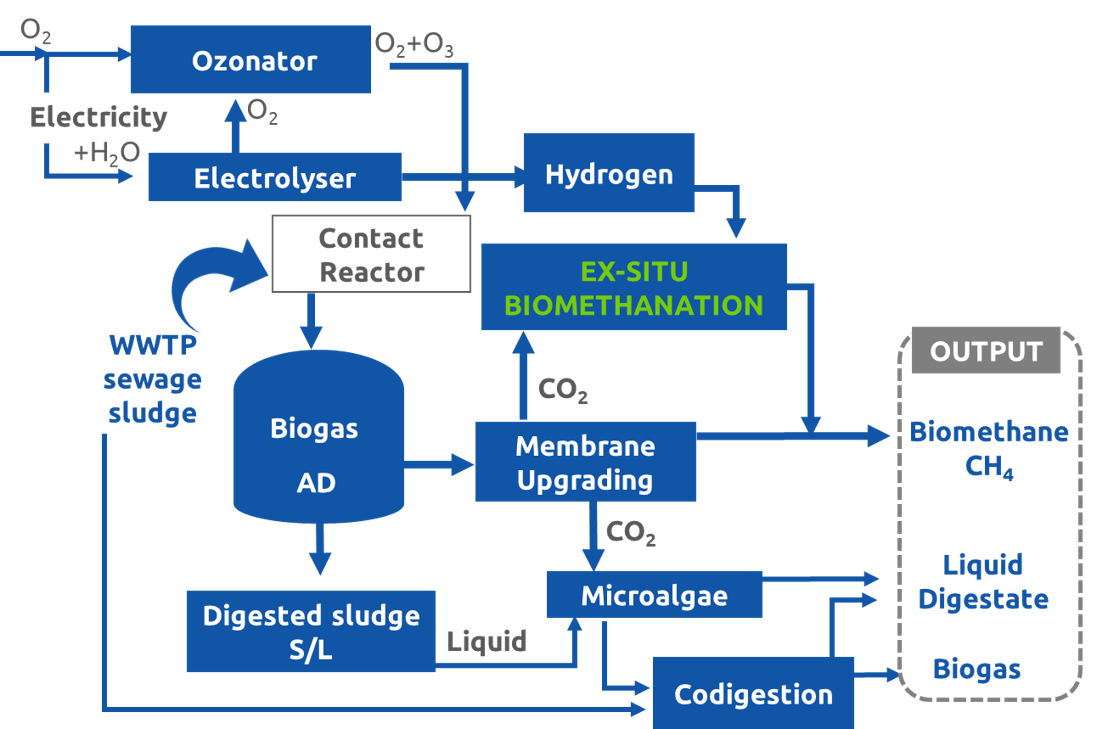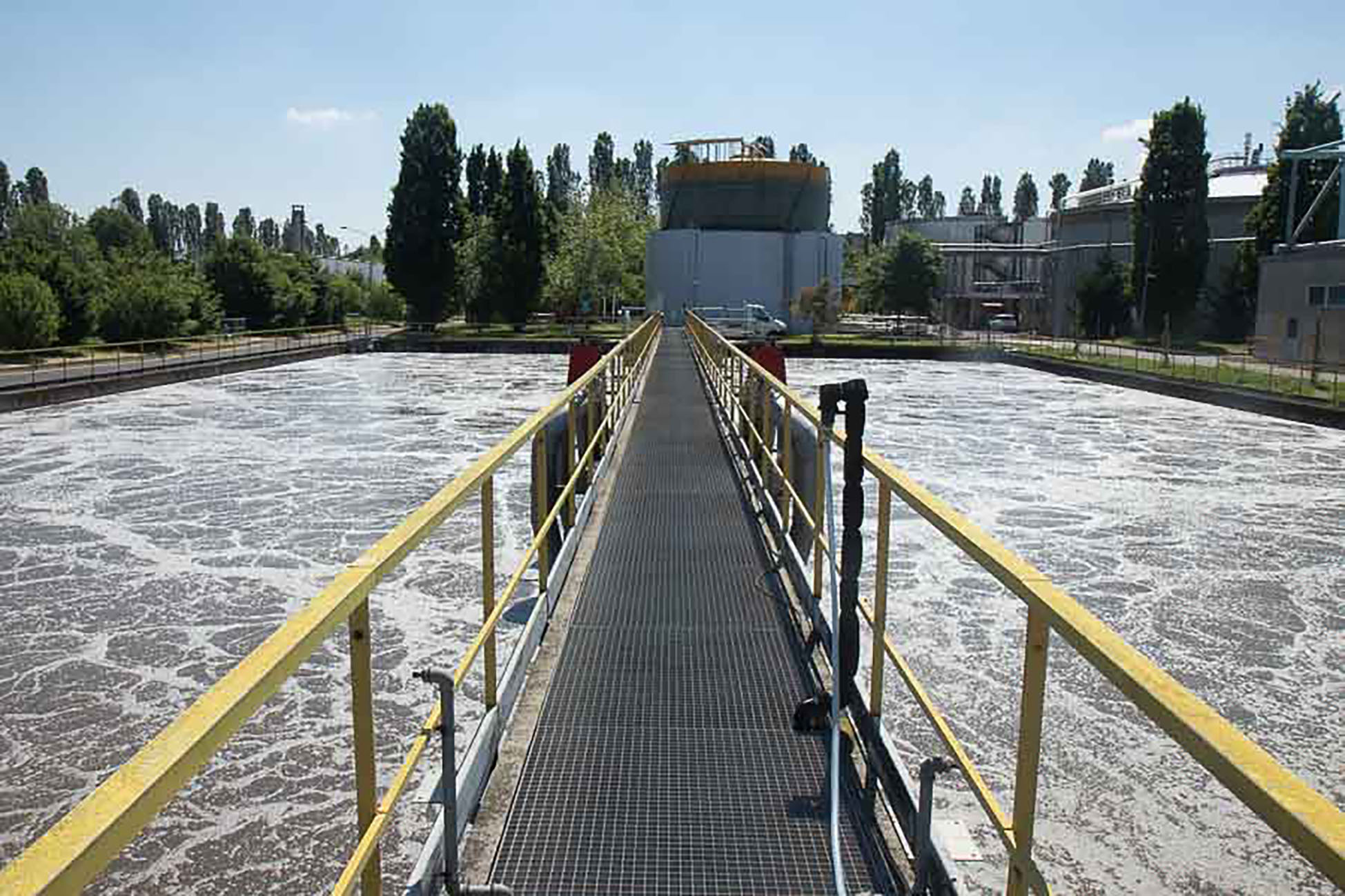Bresso-Niguarda
About the site
The Bresso-Niguarda WWTP demo site is located within the Niguarda neighbourhood in the Municipality of Milan. Biogas produced via sewage sludge anaerobic digestion is already converted into biomethane via physical upgrading and sent to the natural gas distribution grid. Considering that Bresso-Niguarda WWTP has a treatment capacity of about 300,000 people equivalent, corresponding to 2,200 m3/h of inflow from sewer, it currently produces about 90 m3/h of biomethane. As the integrated water service manager for the Metropolitan City of Milan area (Lombardy Region), Gruppo CAP, operates 40 wastewater treatment plants of different sizes and capacities over a 1,500 km2 area. Among those, anaerobic digestion is already widely implemented as technology to reduce sewage sludge and produce biogas for local energy production.
Our technology in brief
In collaboration with partners from Politecnico di Milano, SIAD and CIC, CAP will implement an integrated demo plant, to achieve a more sustainable biomethane production, through a holistic approach that includes biogas upgrade side by side with several methodologies to increase biogas production.
The demonstration plant will be implemented to one of the two parallel AD lines; one line will be maintained as present to have a direct comparison of the overall biomethane yield improvement and production cost reduction achievable by applying the integrated technologies. The project demo will be composed by four units:
(1) sewage sludge ozonolysis, which will serve as pre-treatment to enhance the feedstock digestibility and thus the biogas yield,
(2) ex-situ biological upgrading, to convert carbon dioxide in methane and boost the yield,
(3) microalgae cultivation on the liquid fraction of digestate and
(4) co-digestion of pre-treated sludge, microalgae, and selected substrates.
The purpose of sludge treatment using ozone is to increase the anaerobic biodegradability of the substrate and its capacity to produce biogas while reducing the digestate to be disposed of. In the scientific literature, several experiences are reporting the application of this technology on a laboratory and pilot scale showing significantly positive effects on anaerobic digestion. Biological ex-situ upgrade operates at mild conditions and represent a promising and rapidly evolving technology, in terms of reactor configurations and process volumetric intensity. Key aspects are the gas transfer efficiency and the dynamic response to variable and even null H2 load. The ex-situ upgrade prototype will run biological hydrogenotrophic conversion of biogas to biomethane by Archaea present as suspended biomass and as biofilm, the latter attached on hollow fibers tubular gas transfer membranes. In this innovative configuration, H2 and biogas are supplied by two devices: to the biofilm by diffusion through the lumen of the membrane and, to the suspended biomass, by gas sparging.
Our ambition
The integrated demo plant aims to enhance the positive impacts of each technology implemented in the project with the ambition to demonstrate their synergic viability. The demo will consist of two main units: the feedstock pre-treatment via ozonisation and the ex-situ biological upgrading. Furthermore, two auxiliary units, the micro-algae reactor and the co-digestion unit will complement the two main units. The pre-treatment unit will allow to increase the biogas yield from sewage sludge, the upgrading unit will convert produced biogas into biomethane via an ex-situ hydrogen promoted biological upgrading process. The pre-treatment unit and the upgrading unit will be integrated considering that hydrogen for the biological upgrading and oxygen for the ozone production will be obtained from a single water electrolyser, also included in the demonstration plant. Furthermore, unconverted carbon dioxide will be sent to an algal pond to evaluate its recovery by means of biomass growth. Finally, co-digestion of sludge with microalgae, integrated with process modelling will be demonstrated as a technological approach for increasing the biogas yield and its CO2 content optimization, by controlling the effective mixing of two or more co-substrates and operating conditions.
Our challenges
a) Feedstock pre-treatment via ozonolysis
The main challenge for the full-scale ozonolysis application is related to the design configuration of the contact reactor to avoid ineffective transfer yields and malfunctions related to clogging problems and to the degassing unit of the ozonated sludge to avoid inhibition phenomenon of the AD process linked to the oxygen presence. A critical element to be assessed is the ozonolysis effect on sludge dewaterability. The AD process is expected to mitigate the worsening of the sludge dewaterability after ozonolysis: if this is not the case, the polyelectrolytes optimal dosage will be evaluated and taken into consideration in the process economic viability.
b) Ex-situ biological upgrading
Ex-situ hydrogen promoted biological upgrading efficiency is highly influenced by the mass-transfer of hydrogen into the medium. This aspect will be investigated thoroughly in the pilot, optimizing finding best performing solution on a scaled-up commercial system.
c) Co-digestion pilot
Fast and reliable analytical tools for supporting of digester modelling are currently one of the main bottlenecks for process modelling integration at real scale facilities. Further investigation in this field (NIR, XRF) would be beneficial for providing biogas plants with feasible and affordable process control and optimization tools.



